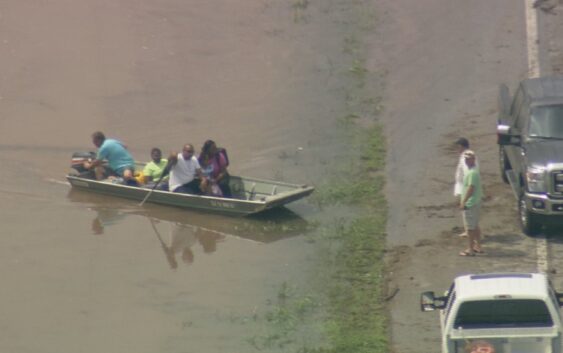- One set of evacuation orders lifted in Caldwell County after wildfire contained
- 'We gutted every building' | Chimney Rock rebuilding after Hurricane Helene
- 'We gutted every building' | Chimney Rock rebuilding after Hurricane Helene
- Debris from Hurricane Helene provides fuel, complicates containment for spring wildfires
- David & Nicole Tepper increase Hurricane Helene relief commitment to $750k
National Hurricane Center armed with better tracking, tools to warn of evacuations sooner

The National Hurricane Center is gearing up and preparing for what could be a very busy season.
ORLANDO, Fla. — KHOU 11 Chief Meteorologist David Paul was the only Houston-area meteorologist who attended the National Hurricane Conference in Orlando this year.
Paul said the first day of the conference focused on evacuations, which is a subject of great importance to anyone who remembers the stress surrounding Hurricane Rita and the mess that was the 2005 Houston/Galveston evacuation.
Since Rita, a lot of work and study has gone into understanding what emergency managers and residents need to safely move out of harm’s way. The key element that came up over and over again is time. The sooner evacuation instructions can be given, the safer and smother things will go.
So far, there have been improvements in computer modeling that are extending the forecast envelope, giving longer-range forecasts and delivering that extra time to emergency managers. In addition, new storm surge modeling is being rolled out in Texas. This will give inundation forecasts two to three days in advance of the storm, buying us even more critical time.
The National Hurricane Center is gearing up and preparing for what could be a very busy season.
“La Niña is not great news,” said Dr Michael Brennan, the director of the National Hurricane Center. “That seems where we’re heading, but it’s a little early to get too specific. The NOAA forecast comes out in late May, and that’s when we’ll get a better idea about how it’s going to evolve and what the temperature pattern is going to look like.”
It’s never too early to start preparing for hurricane season. If you live on or near the coast, you should always be prepared to evacuate for a big storm but remember, you don’t have to drive hundreds of miles away if you have a friend or relative who lives 10 miles inland in a safe place.
Brennan said the best piece of hurricane prep advice is to take the time to talk with your neighbors. He said to make hurricane prep a community effort as you prepare for the next storm.
Day two of the National Hurricane Conference will focus on improvements in storm surge, coastal inundation mapping and new and improved inland rainfall and flooding products.